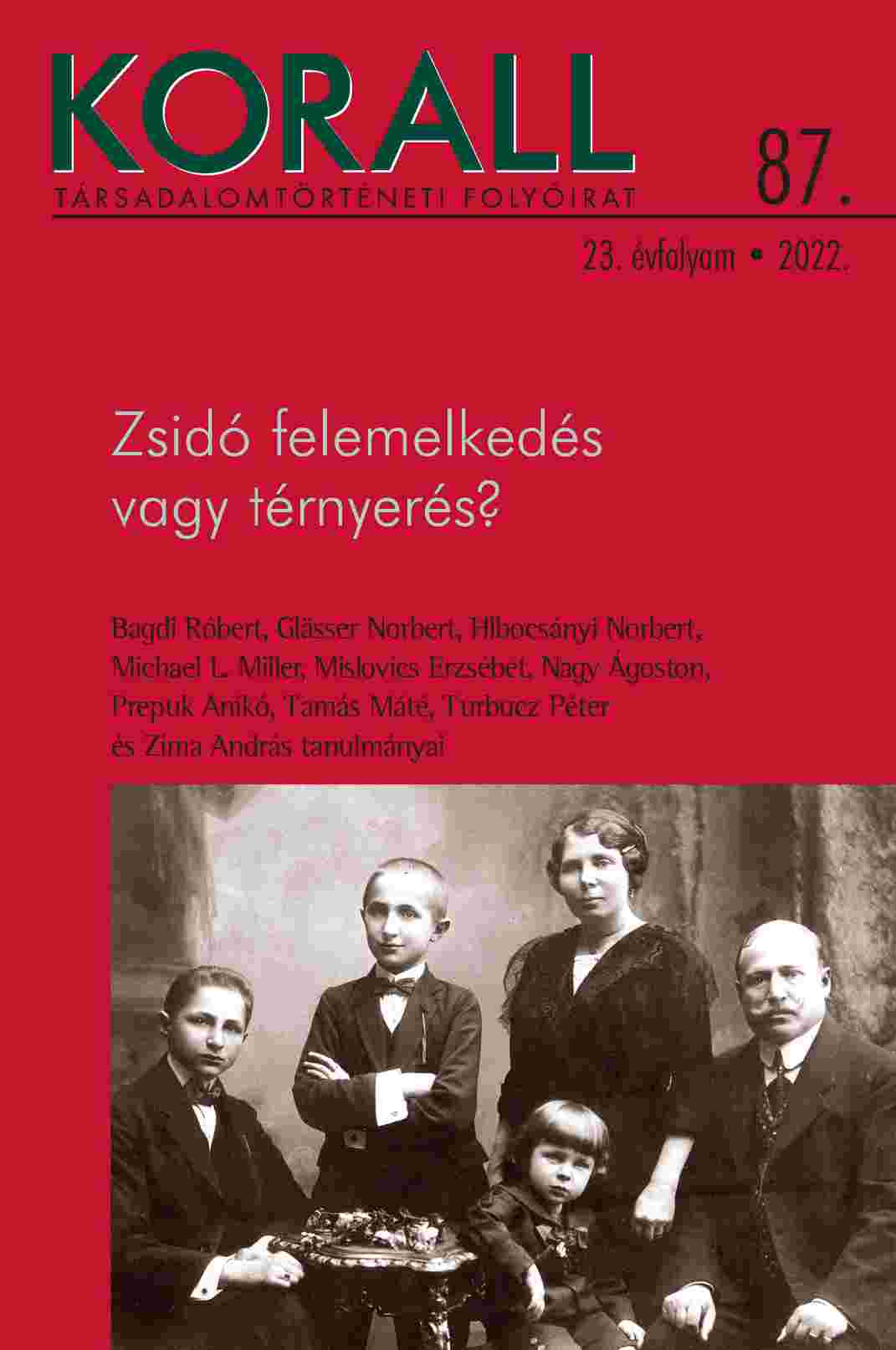Az „izraelita paritástól” a felekezetközi kapcsolatokig a 19. század végi Óbecsén. A lokalitás szerepe egy modernizálódó járási elitben
From the “Israelite Parity” to Inter-Denominational Relations in Late Nineteenth-Century Óbecse: The Role of Locality in a Modernizing District’s Elite
Author(s): Norbert Glässer, András ZimaSubject(s): Social history, 19th Century, Pre-WW I & WW I (1900 -1919)
Published by: KORALL Társadalomtörténeti Egyesület
Keywords: Jewish emancipation; modernization; rural society; locality
Summary/Abstract: The local emancipation processes of rural Jewry were nuanced by local networks, local interests, and by shifting denominational and nationality ratios. Viewed from below, the creative power of locality – in the sense defined by Arjun Appadurai – to organize local structures can be illustrated by the organization of the local elite in Óbecse (Bács-Bodrog County) on the Central Tisza River after the Austro-Hungarian Compromise of 1867. The royal district of Bács in Tiszáninnen, as a modern rural district structure built on the ruins of the erstwhile Estates system, was attracting new settlers to Óbecse. The local effects of the new state structure were advantageous for a number of new professions in the administration. Instead of landing at the municipality through their denomination, the newcomers, whether lawyers, printers or industrialists, arrived via their trans-denominational network of personal connections in education or business. Local inter-denominational connections were no longer defined by rigid patterns either. New phenomena such as philanthropy, patronage, the liberal concept of confessionalism, and local patriotism became a driving force for action, transcending the formerly narrow denominational boundaries. These modern phenomena were not sharply divorced from the remnants of the Estate system. Subordinating the local question of parity to modern national aspirations, for example, it was extended to the Jewry, so that their involvement would tip the balance of Greek-Catholic (Serb) and Catholic (Hungarian and Hungarianised German) in favour of the Hungarian nation. The study examines individual career paths, community strategies behind concrete decisions, and the transforming social frameworks of the Age of Dualism (1867–1918), also providing a brief look into adapting individual strategies after the transfer of sovereignty. Through philanthropy and patronage, some of the local life trajectories under scrutiny had implications on a national level. By demonstrating the organizing power of the locality, the bottom-up perspective of the study nuances grand social patterns.
Journal: Korall - Társadalomtörténeti folyóirat
- Issue Year: 2022
- Issue No: 87
- Page Range: 96-118
- Page Count: 24
- Language: Hungarian

